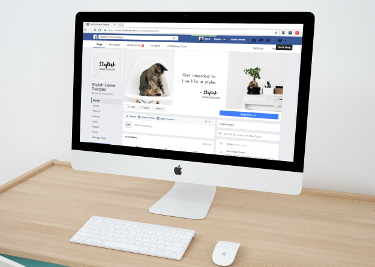 Everywhere you turn today you will find social media. People taking selfies at the grocery store, responding to Instagram while walking down the street, and of course checking Facebook while clocked in at work. What do you do when social media use gets out of hand in the workplace? It can seem like a never-ending battle with employees, but it doesn’t have to be that way.
Everywhere you turn today you will find social media. People taking selfies at the grocery store, responding to Instagram while walking down the street, and of course checking Facebook while clocked in at work. What do you do when social media use gets out of hand in the workplace? It can seem like a never-ending battle with employees, but it doesn’t have to be that way.
Before you go any further, draft up a social media use policy. This will save you headaches and possible litigation. Employees can agree to it and follow it or they can find work elsewhere. Sounds harsh, I know, but your business’s reputation is not worth Mary’s selfie. Don’t get me wrong, the policy doesn’t have to be rigid and forceful. Your employees are adults and can handle responsibility. Similar to a job description, policies allow for clarification and accountability, which is great for both employer and employee.
 To create a social media use policy, start by splitting the policy between company official accounts and personal accounts. For company official accounts, clearly articulate your brand as well as how you want it perceived, so that the message is consistent across all platforms, no matter who posts or comments. Talk about confidentiality and what company info can or cannot be shared. This can be similar to the non-disclosure you had your employees sign when they got hired.
To create a social media use policy, start by splitting the policy between company official accounts and personal accounts. For company official accounts, clearly articulate your brand as well as how you want it perceived, so that the message is consistent across all platforms, no matter who posts or comments. Talk about confidentiality and what company info can or cannot be shared. This can be similar to the non-disclosure you had your employees sign when they got hired.
For personal accounts, explain what they’re allowed to divulge about the company. For example, posting identifiable client information without the client’s permission is a major no-no. Badmouthing the customers is clearly out, as well as complaints about employees or managers that should be brought to HR. Basically, the employee is responsible for what is posted and should be cognizant of who may be reading. For anyone that uses their personal account for company business (i.e. connecting with customers or sharing marketing materials), set clear expectations of what can and should be listed on their account. For example, it’s an employee’s prerogative to have a side-gig as an underwear model on the weekend; but perhaps it’s not the best idea to have that individual representing your company using social media pages filled with scantily clad photos. You probably have other more conservative options, or you can encourage that employee to develop different social media accounts to represent your company.
For both personal and company accounts, outline the potential consequences for not following these guidelines. Ensure these are clear and concise to avoid loopholes that can be quickly manipulated.
 Perhaps even more importantly, spell out clearly defined roles and responsibilities. Figure out who will have access to the company’s social media. You can harness the power of social media for your benefit if you play it smart. Your marketing team will need it, well, to market. Sales can keep in touch with prospects or members easily and it gives all parties confirmation that you care. Beyond that, you may want to give your receptionist or office manager access in order to help with customer service on different platforms. Clearly articulate expectations for each role so that you don’t end up with customer service professionals trying to market, and marketing selling things that the service team can’t deliver. With clear roles, you’ll also know when each team member will jump in to field an interaction from a customer or prospect without overwhelming them or leaving them hanging.
Perhaps even more importantly, spell out clearly defined roles and responsibilities. Figure out who will have access to the company’s social media. You can harness the power of social media for your benefit if you play it smart. Your marketing team will need it, well, to market. Sales can keep in touch with prospects or members easily and it gives all parties confirmation that you care. Beyond that, you may want to give your receptionist or office manager access in order to help with customer service on different platforms. Clearly articulate expectations for each role so that you don’t end up with customer service professionals trying to market, and marketing selling things that the service team can’t deliver. With clear roles, you’ll also know when each team member will jump in to field an interaction from a customer or prospect without overwhelming them or leaving them hanging.
As you develop your policy, keep a few things in mind. Don’t discourage use, and ensure the language of the document sounds positive. Employees will get upset with a big change to their routine, particularly if they perceive it as restrictive or negative. Also, be transparent on why you’re creating a policy. Let them know if productivity has been negatively affected through social media use, and be clear with them about the potential security risks you are trying to avoid. Finally, explain how a policy keeps everyone honest and accountable. As long as you are transparent about the new policy, implementing it shouldn’t be a huge issue. If you have employees assist you drafting this document, that’s even better. They become part of the change and not steamrolled by it.